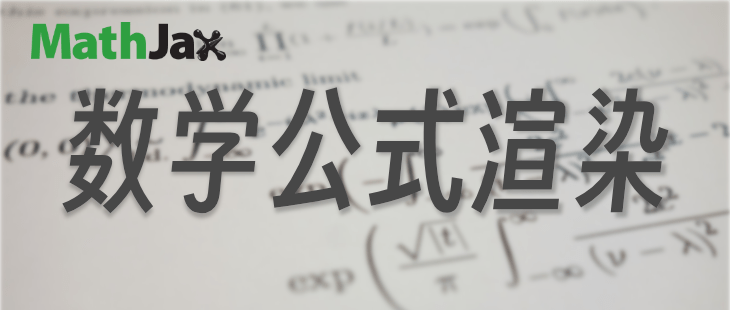A. A Gift From Orangutan 贪心 题意 构造一个
题解 把最大值和最小值放在最前面,因此答案为
参考代码 1 2 3 4 5 6 7 8 9 10 11 12 13 14 15 16 17 18 19 20 21 22 23 24 25 26 27 28 29 30 #pragma comment(linker, "/STACK:1024000000,1024000000" ) #include <bits/stdc++.h> using namespace std;using i64 = long long ;void solve () int n; cin >> n; int mx = 0 , mn = 1001 ; for (int i = 0 ; i < n; i++) { int x; cin >> x; mx = max (mx, x); mn = min (mn, x); } cout << (n - 1 ) * (mx - mn) << '\n' ; } int main (int argc, char * argv[]) ios::sync_with_stdio (false ); cin.tie (nullptr ); int t; cin >> t; while (t--) { solve (); } return 0 ; }
复杂度分析 时间复杂度: 空间复杂度: B. Minimise Oneness 组合数学 思维 题意 构造一个长度为
题解 设
对于
因此要使
综上,只要构造一个 1000...0 即可。
参考代码 1 2 3 4 5 6 7 8 9 10 11 12 13 14 15 16 17 18 19 20 21 22 23 24 #pragma comment(linker, "/STACK:1024000000,1024000000" ) #include <bits/stdc++.h> using namespace std;using i64 = long long ;void solve () int n; cin >> n; cout << string (1 , '1' ) + string (n - 1 , '0' ) << '\n' ; } int main (int argc, char * argv[]) ios::sync_with_stdio (false ); cin.tie (nullptr ); int t; cin >> t; while (t--) { solve (); } return 0 ; }
复杂度分析 C. A TRUE Battle 位运算 博弈 题意 给定长度为 or 或 and 运算符。Alice 先手且想到使得最后序列的值为 true,Bob 反之,判断 Alice 是否能获胜。
如 1 0 0,Alice 先手,在 1 和 0 之间添加一个 or 。此时无论 Bob 添加 or 还是 and ,即 1 or 0 and 0 = 1 or 1 = true 或 1 or 0 or 0 = true,结果都为 true。
题解 首先,只要首尾有一个 1,Alice 只要在它旁边添加 or 即可。
如 1 0 0 0,无论右边的情况如何,最坏为 false,然后 1 or 0 = true。
对于其他情况,即 1 在中间不在首尾。有两种情况:
无连续 1:1 的左右必然一个 or (Alice) 和 and (Bob),最终结果为 0 or 1 and 0 = false。 有连续 1:这段 1 的左右必然一个 or (Alice) 和 and (Bob),最终为 0 or 1 ... 1 and 0 = true,可以看出,中间的运算符不会影响最终结果。 小技巧 在查找之前在首尾添加 1,然后是否有查找 11 即可。如果存在则 Alice 获胜,否则 Bob 获胜。
参考代码 1 2 3 4 5 6 7 8 9 10 11 12 13 14 15 16 17 18 19 20 21 22 23 24 25 26 27 28 29 30 31 #pragma comment(linker, "/STACK:1024000000,1024000000" ) #include <bits/stdc++.h> using namespace std;using i64 = long long ;void solve () int n; cin >> n; string s; cin >> s; s = '1' + s + '1' ; if (s.find ("11" ) != -1 ) { cout << "YES" << '\n' ; } else { cout << "NO" << '\n' ; } } int main (int argc, char * argv[]) ios::sync_with_stdio (false ); cin.tie (nullptr ); int t; cin >> t; while (t--) { solve (); } return 0 ; }
复杂度分析 时间复杂度: 空间复杂度: D. QED’s Favorite Permutation 模拟 题意 一个排列
如果 s[i] = 'L',则 p[i] 可以和 p[i-1] 交换; 如果 s[i] = 'R',则 p[i] 可以和 p[i+1] 交换; 接下来有 s[x] 替换成另一个字符。问在替换字符后的
题解 如果要交换 s[k] = 'L' 并且 s[k+1] = 'R'。
因此需要找出所有的
官方题解 中使用 差分 维护区间中包含
不妨先确定交换的方向,当 preMax,如果 bad。
如果满足 cnt。
当改变 cnt。即需要重新判断
若可以使得排列为升序,则需要满足
参考代码 1 2 3 4 5 6 7 8 9 10 11 12 13 14 15 16 17 18 19 20 21 22 23 24 25 26 27 28 29 30 31 32 33 34 35 36 37 38 39 40 41 42 43 44 45 46 47 48 49 50 51 52 53 54 55 56 57 58 59 60 61 62 63 64 65 66 67 68 69 70 71 72 73 74 75 #pragma comment(linker, "/STACK:1024000000,1024000000" ) #include <bits/stdc++.h> using namespace std;using i64 = long long ;void solve () int n, q; cin >> n >> q; vector<int > p (n) ; for (int i = 0 ; i < n; i++) { cin >> p[i]; } for (int i = 1 ; i < n; i++) { p[i] = max (p[i - 1 ], p[i]); } vector<bool > bad (n) ; for (int i = 1 ; i < n; i++) { if (p[i - 1 ] != i) { bad[i] = true ; } } string s; cin >> s; int cnt = 0 ; for (int i = 1 ; i < n; i++) { if (bad[i] && s.substr (i - 1 , 2 ) == "LR" ) { cnt++; } } while (q--) { int x; cin >> x; x--; if (bad[x] && s.substr (x - 1 , 2 ) == "LR" ) { cnt--; } if (bad[x + 1 ] && s.substr (x, 2 ) == "LR" ) { cnt--; } if (s[x] == 'R' ) { s[x] = 'L' ; } else { s[x] = 'R' ; } if (bad[x] && s.substr (x - 1 , 2 ) == "LR" ) { cnt++; } if (bad[x + 1 ] && s.substr (x, 2 ) == "LR" ) { cnt++; } if (cnt == 0 ) { cout << "YES" << '\n' ; } else { cout << "NO" << '\n' ; } } } int main (int argc, char * argv[]) ios::sync_with_stdio (false ); cin.tie (nullptr ); int t; cin >> t; while (t--) { solve (); } return 0 ; }
复杂度分析 时间复杂度: 空间复杂度: E. MEXimize the Score 组合数学 动态规划 题意 定义数组
求数组
题解 根据贪心思想,要把
例如
对于一个数组 cnt。假设构造的子集为
首先,我们需要枚举
1 2 3 while (p < n && cnt[p] >= k) { p++; }
考虑
对于序列后缀,即
对于序列前缀,即 tmp 来维护当前剩余元素的个数。
定义
将所有的前缀累乘得到总贡献,即
然后根据乘法原理将两者相乘加入到答案中。
参考代码 1 2 3 4 5 6 7 8 9 10 11 12 13 14 15 16 17 18 19 20 21 22 23 24 25 26 27 28 29 30 31 32 33 34 35 36 37 38 39 40 41 42 43 44 45 46 47 48 49 50 51 52 53 54 55 56 57 58 59 60 61 62 63 64 65 66 67 68 69 70 71 72 73 74 75 76 77 78 79 80 81 82 83 84 85 86 87 88 89 90 91 92 93 94 95 96 97 98 99 100 101 102 103 104 105 106 107 108 109 110 111 112 113 114 115 116 117 118 119 120 121 122 123 124 125 126 127 128 129 130 131 132 133 134 135 136 137 138 139 140 141 142 143 144 145 146 147 148 149 150 151 152 153 154 155 156 157 158 159 160 161 162 163 164 165 166 167 168 169 170 171 172 173 174 175 176 177 178 179 180 181 182 183 184 185 186 187 188 189 190 191 192 193 194 195 196 197 198 199 200 201 202 203 204 205 206 207 208 209 210 211 212 213 214 215 216 217 218 219 220 221 222 223 224 225 226 227 228 229 #pragma comment(linker, "/STACK:1024000000,1024000000" ) #include <bits/stdc++.h> using namespace std;using i64 = long long ;using u64 = unsigned long long ;using u32 = unsigned ;template <typename T>constexpr T power (T a, u64 b) T res{1 }; for (; b != 0 ; b /= 2 , a *= a) { if (b % 2 == 1 ) { res *= a; } } return res; } template <u32 P>constexpr u32 mulMod (u32 a, u32 b) return 1ULL * a * b % P; } template <u64 P>constexpr u64 mulMod (u64 a, u64 b) u64 res = a * b * u64 (1.L * a * b / P - 0.5L ) * P; res %= P; return res; } template <typename U, U P>requires std::unsigned_integral<U>struct ModIntBase {public : constexpr ModIntBase () : x(0 ) { template <typename T> requires std::integral<T> constexpr ModIntBase (T x_) : x(norm(x_ % T{ P})) {} constexpr static U norm (U x) if ((x >> (8 * sizeof (U) - 1 ) & 1 ) == 1 ) { x += P; } if (x >= P) { x -= P; } return x; } constexpr U val () const return x; } constexpr ModIntBase operator -() const { ModIntBase res; res.x = norm (P - x); return res; } constexpr ModIntBase inv () const return power (*this , P - 2 ); } constexpr ModIntBase &operator *=(const ModIntBase &rhs) & { x = mulMod <P>(x, rhs.val ()); return *this ; } constexpr ModIntBase &operator +=(const ModIntBase &rhs) & { x = norm (x + rhs.x); return *this ; } constexpr ModIntBase &operator -=(const ModIntBase &rhs) & { x = norm (x - rhs.x); return *this ; } constexpr ModIntBase &operator /=(const ModIntBase &rhs) & { return *this *= rhs.inv (); } friend constexpr ModIntBase operator *(ModIntBase lhs, const ModIntBase &rhs) { lhs *= rhs; return lhs; } friend constexpr ModIntBase operator +(ModIntBase lhs, const ModIntBase &rhs) { lhs += rhs; return lhs; } friend constexpr ModIntBase operator -(ModIntBase lhs, const ModIntBase &rhs) { lhs -= rhs; return lhs; } friend constexpr ModIntBase operator /(ModIntBase lhs, const ModIntBase &rhs) { lhs /= rhs; return lhs; } friend constexpr std::ostream &operator <<(std::ostream &os, const ModIntBase &a) { return os << a.val (); } friend constexpr bool operator ==(ModIntBase lhs, ModIntBase rhs) { return lhs.val () == rhs.val (); } friend constexpr bool operator !=(ModIntBase lhs, ModIntBase rhs) { return lhs.val () != rhs.val (); } friend constexpr bool operator <(ModIntBase lhs, ModIntBase rhs) { return lhs.val () < rhs.val (); } private : U x; }; template <u32 P>using ModInt = ModIntBase<u32, P>;template <u64 P>using ModInt64 = ModIntBase<u64, P>;constexpr u32 P = 998244353 ;using Z = ModInt<P>;struct Comb { int n; std::vector<Z> _fac; std::vector<Z> _invfac; std::vector<Z> _inv; Comb () : n{0 }, _fac{1 }, _invfac{1 }, _inv{0 } {} Comb (int n) : Comb () { init (n); } void init (int m) if (m <= n) return ; _fac.resize (m + 1 ); _invfac.resize (m + 1 ); _inv.resize (m + 1 ); for (int i = n + 1 ; i <= m; i++) { _fac[i] = _fac[i - 1 ] * i; } _invfac[m] = _fac[m].inv (); for (int i = m; i > n; i--) { _invfac[i - 1 ] = _invfac[i] * i; _inv[i] = _invfac[i] * _fac[i - 1 ]; } n = m; } Z fac (int m) { if (m > n) init (2 * m); return _fac[m]; } Z invfac (int m) { if (m > n) init (2 * m); return _invfac[m]; } Z inv (int m) { if (m > n) init (2 * m); return _inv[m]; } Z binom (int n, int m) { if (n < m || m < 0 ) return 0 ; return fac (n) * invfac (m) * invfac (n - m); } } comb; void solve () int n; cin >> n; vector<int > cnt (n) ; for (int i = 0 , a; i < n; i++) { cin >> a; cnt[a]++; } vector<Z> suf (n) ; suf[n - 1 ] = 1 ; for (int i = n - 1 ; i > 0 ; i--) { suf[i - 1 ] = suf[i] * power (Z (2 ), cnt[i]); } Z ans = 0 ; int p = 0 ; vector<Z> f (n) ; auto tmp = cnt; for (int k = n; k > 0 ; k--) { while (p < n && cnt[p] >= k) { p++; } Z res = 1 ; for (int i = 0 ; i < p; i++) { while (tmp[i] >= k) { f[i] += comb.binom (cnt[i], tmp[i]); tmp[i]--; } res *= f[i]; ans += res * suf[i]; } } cout << ans << '\n' ; } int main (int argc, char * argv[]) ios::sync_with_stdio (false ); cin.tie (nullptr ); int T; cin >> T; while (T--) { solve (); } return 0 ; }
复杂度分析 时间复杂度:虽然代码看上去时间复杂度是 空间复杂度: 











